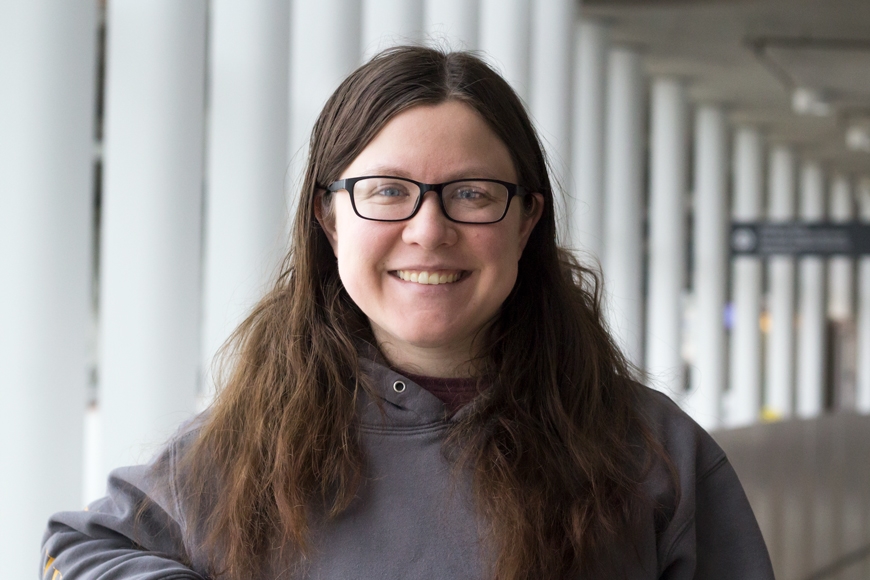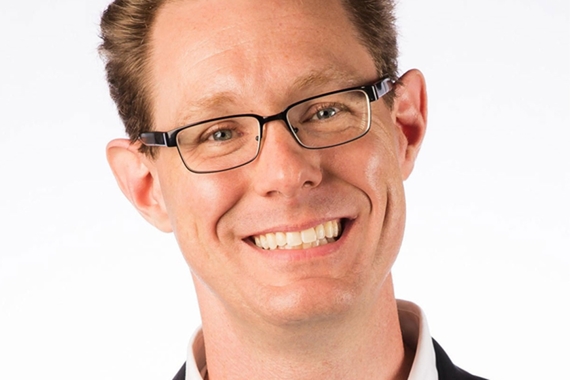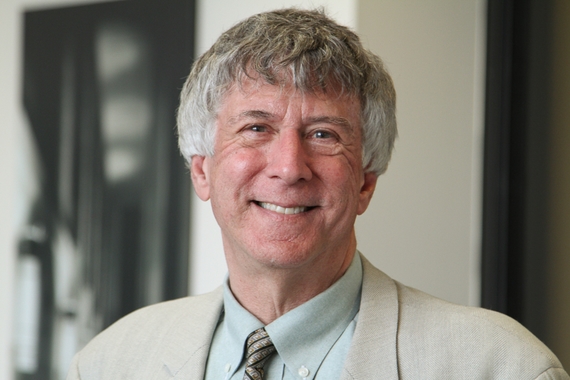Nontraditional Student Gives Time to Veteran-Brain-Injury Research
As a twenty-nine year old, Hayley Brendalen has experienced more than the typical undergraduate senior. “I think the challenge for me. . . . is that everyone is so much younger. . . . I’m just in a different stage of life than them,” Brendalen says
It was Brendalen’s interest in mental health that spurred her to come back to school to study psychology. She applied and enrolled in 2013 because of the Department of Psychology’s reputation. “Once I started working in the mental health field I never really looked back,” Brendalen says.
Brendalen has been working as a volunteer with the Defense and Veterans Brain Injury Center (DVBIC), where she is able to combine her interests and passions to help others. Her volunteer work is applied toward her psychology degree through PSY 3903W, the department’s community-engagement class that psychology majors must complete.
Her Work at the DVBIC
The Defense and Veterans Brain Injury Center (DVBIC), established by Congress in 1992, is a part of the US Military Health System. The Minneapolis site is paired with Minneapolis Veterans Affairs (VA) and serves veterans and active-duty service members from Minnesota, Illinois, Indiana, Iowa, Michigan, Nebraska, North Dakota, South Dakota, and Wisconsin. According to their mission, they provide education, care coordination, and research services. Brendalen’s role is in research services.
“It’s incredible to work with the veteran population,” Brendalen says, “The stories they tell are amazing.” She has been volunteering for the DVBIC since July 2017. She manages the intake paperwork for research participants and screens their medical record to see whether they're eligible for the center’s studies. “I like being involved with research. I also like doing the screens . . . and translating that information into something that’s useful for the study.” Brendalen says.
Brendalen reviews the files of people who have expressed interest in participating in one of the brain-injury studies. She assesses factors that would make them a good research subject. Her current project is reviewing a file for a veteran with resistant depression. Their file is brimming: over 1,500 pages of notes of information. “It’s a lengthy task, but I like going through [the subject’s file] and then presenting to my coworkers whether [the subject] would be a good fit or not for the study and why,” Brendalen says.
After about six months, Brendalen was asked to help with the center’s follow-up visits. “I was excited to take on more responsibility. I observed a lot of sessions being run, then practiced a session with coworkers, and then ran a real patient [session] with people observing me.” These follow-up meetings take place with patients who fit the criteria for a brain-trauma study. Brendalen explains the different assessments the center does—like mood or sleep tests—and has the patient complete tests that measure attention and working memory.
Engagement Plus Classroom
Brendalen was able to combine her work with the DVBIC and another interest of hers: factitious disorder, otherwise known as Munchausen syndrome. A person with Munchausen syndrome “acts as if they had a physical or mental illness when they’re really not sick,” Brendalen says. These traits can include a history of seeking treatment at many different hospitals and clinics; vague or inconsistent symptoms; faking symptoms; causing self-harm; and attempting to tamper with test results.
After a couple of encounters with people with this condition at the center, Brendalen’s curiosity was piqued. “I was screening people at the VA to see if they’d be eligible for the studies,” Brendalen says. Brendalen and her colleagues have been instructed to screen for patients with significant indicators of Munchausen syndrome into their studies as they have no incentive to get better for the treatment studies and any self-reporting of symptoms would be inaccurate.
Background, Finding Interests, and Going Back to School
Her time at the University and DVBIC has helped her development and confidence. “I found out I had a learning disability when I came to college. I left high school with a very low sense of self-esteem,” Brendalen says. Despite her disability, Brendalen earned an associate’s degree from Dakota County Technical College and has already held a full-time position.
“I actually got accommodations for my disability [at the University of Minnesota]. It has made a huge difference. My first semester here I took a stats class and got my first A in math since elementary school. It felt amazing. I’ve learned that . . . I just need to do things a different way,” Brendalen says. Her communication and problem-solving skills have improved greatly as well.
For the Future
While it has been a long period of intermittently going to school, Brendalen still wants to be in an educational setting. From her time at the U and with the center, she has learned that she wants to go into research. “Being a part of understanding [factitious disorder] has been really cool,” Brendalen says, “seeing how all these pieces come together.”
Brendalen has plans to pursue her interests in complex PTSD and Munchausen’s syndrome in graduate school. “There’s not a lot of research on these people, and I want to change that.”
This story was written by an undergraduate student account executive in CLAgency. Meet the team.



